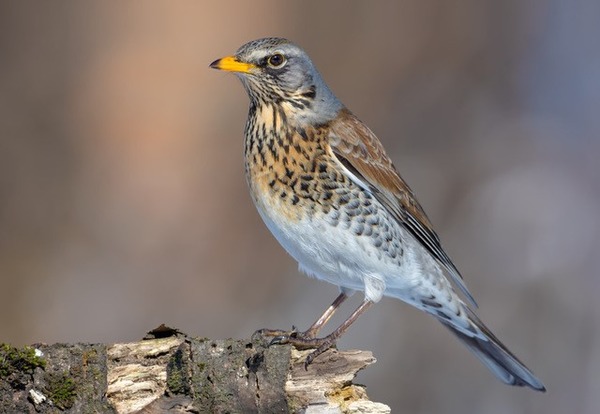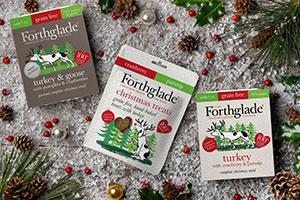This Christmas, Devonian dog-lovers Forthglade are launching a NEW festive feast guaranteed to be a favourite with your canine companion – Forthglade’s Gourmet Turkey and Goose grain-free natural wet meal. Packed with 75% meat… Read more
Help migrating birds, with tips from Honeyfield’s
With colder weather approaching, there’s a big migration journey in store for many wild birds and they will all appreciate some extra support to help fuel up for their trip to warmer climes. Honeyfield’s resident wild bird expert Simon Smethurst, who is head of sales at Honeyfield’s, has produced some tips to help wild bird-loving customers to attract and support all the ‘birds without borders’ as they pass through, as well as those who stay in the UK all year round.
Many of Northen Europe and Scandinavia’s summer breeders will spend their winters in Africa but can be tempted to visit UK gardens in the autumn and winter with the right food sources and water supply. They will benefit from some extra nutritional support before they start to move further south as the colder weather takes a grip.
“Initially migratory birds will eat berries, seeds and fruits from fields and hedgerows to build fat reserves prior to making their southward journey,” said Simon. “But once they start to move south, they will look out for supplementary feeds. During periods of colder weather and especially during freezing conditions, they will seek sanctuary and sustenance in gardens and there are several ways to encourage and support them.”
Finches
“The colourful finch family of bramblings, siskins, redpolls and chaffinches will move south over the north-sea in their thousands in the correct conditions, bringing a vibrant display to home spaces,” says Simon.
Attract them with:
• Low wheat seed mixes
• Sunflower hearts
• Niger feeders.
Tits, Nuthatches, Treecreepers and Woodpeckers
“These species can be more secretive but often move from open woodland into domestic gardens in the autumn and winter, attracted by feeding stations containing high fat energy-boosting food,” advises Simon. “This will help them maintain good condition and feather quality to see them through the colder and wetter winter nights in the UK.”
Attract them with:
• Suet balls
• Suet blocks
• Suet pellets
Thrushes and winter warblers
Huge numbers of winter thrushes arrive in the UK from Scandinavia in autumn on their journey south into Europe and beyond to survive the colder weather.
into Europe and beyond to survive the colder weather.
“Fieldfares and Redwings are bold, noisy and very attractive additions to any garden,” says Simon. “They utilise hedgerow berries on their journey but are predominantly ground feeders when they visit gardens. They are unable to hold onto or feed from a standard hanging bird feeders so food must be placed where they are able to access it.”
Attract them with:
• High energy soft feeds (not seeds)
• Windfall apples
• Suet-based products such as scattered suet pellets on a lawn or a shed or garage roof
Robins
“The robin that breeds and feeds in your customer’s garden during the summer, may not be the one who spends the winter there!” says Simon.
“Thousands of birds may arrive as there is a progressive southward movement to avoid cold winter weather,” he continues. “These birds are more aggressive forest breeders and may oust regular robins from the territory. They are dependent on surviving the colder weather and will fight to maintain a regular food source.”
Attract them with:
• Mealworms
• Suet pellets
• Suet blocks
• Fat balls
• High energy seed mixes
Blackcaps
“These attractive Summer visitors are becoming more common in UK gardens during the autumn/winter period as the climate becomes warmer,” says Simon. “However, as they are predominantly an insectivorous soft bill, they can only thrive in gardens during this period where there is a regular supply of accessible food.”
Attract them with:
• Mealworms
• Suet pellets
• Fat balls
• Fruit
“Whatever the species it’s always vital to keep water stations clean and regularly topped up and remember to break ice in the winter,” reminds Simon.
Honeyfield’s offers an exceptional range of wild bird feeds designed to support wildlife throughout the changing seasons. From high-energy sunflower hearts and nutritious seed mixes to suet treats and mealworms, there’s a feed for every species and dietary requirement. An innovative variety of Wildlife World feeders are also available to help your customers create a thriving, natural environment where birds and other wildlife can flourish.
The ranges are competitively priced for consumers to be able to feed the best, while retailers can benefit from good margin structures and introductory stocking incentives.
To find out more about the Honeyfield’s range visit: https://www.honeyfieldswildbird.co.uk/
- Log in to post comments


